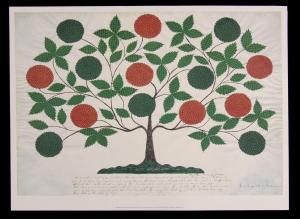My heart sank when Emily challenged me to read The Unicorn by Iris Murdoch.
Although it is hardly in the spirit of Something Rhymed, I considered myself firmly in the Elizabeth Bowen camp. My copy of her Collected Stories accompanied me when I first left for college and has been packed and unpacked so many times since. When I got my first lecturing post, I put it on my syllabus, and nowadays I often quote Bowen to encourage my New York University students to focus on creativity during their time in the UK: ‘Imagination of my kind is most caught, most fired, most worked upon by the unfamiliar’.
My memories of reading Murdoch, on the other hand, are scant and chequered.
My cousin Nic – a voracious and insightful reader – had devoured Murdoch’s novels, and my writer friend Wendy Vaizey had written about Murdoch in her PhD. Nic and I shared a love of Thomas Hardy’s books and Wendy and I had introduced each other to our favourite texts by medieval mystics, so I felt sure that I too would fall in love with Murdoch’s work.
On one of my trips down to stay with Nic in her book-lined cottage in Cornwall, I picked up a copy of Murdoch’s A Severed Head. I read it over Easter, sitting in Nic’s sunlit conservatory – the mugs of tea at my side replaced at dusk by glasses of gin. When Nic got home from work, I’d put down the book and we’d take cliff-top walks or share plates of fish straight from the sea.
There was such a stark difference that week between my external life – full of sunshine and hyacinths and warm conversation – and the world that Murdoch’s novel set up in my mind. Neither the story nor the characters have stayed with me, but the coldness and cruelty of the book have remained.
The Unicorn also has an iciness to it, yet I found it compelling and clever and self-consciously indebted to its literary forebears.

Bowen’s influence is clear: the faded glory of the Irish country house and the Anglo-Irish cast, which are said to have been inspired by guests Murdoch met at Bowen’s Court.
Yet it was another female author who came to mind when I read the opening of The Unicorn. Its gothic setting and the simultaneous presence and absence of the mistress of the house was redolent with echoes of Rebecca.
It quickly became obvious, however, that Murdoch’s approach to the gothic differed from that of Daphne du Maurier. As I read on, I began to feel that The Unicorn shares more of its DNA with Northanger Abbey. Like Jane Austen before her, Murdoch self-consciously plays with gothic conventions, calling them into question and sending them up.
Even more prominent still, is Murdoch’s engagement with Charlotte Bronte’s Jane Eyre since, like its predecessor, The Unicorn features an imprisoned mistress of the house. But Murdoch makes Hannah Crean-Smith a more central character than Brontë’s Bertha, and the novel investigates the question of her sanity.
Critics have tended to interpret Hannah Crean-Smith as an enchantress: apparently pure but ultimately revealed as an evil manipulator. I see her more as a damaged being, fashioned by the scarring experiences of torture and imprisonment.
I would love to sit beside my cousin in her Cornish conservatory, sipping gin and finding out what she made of Hannah Crean-Smith. But Nic died last year in a sunlit room, our family reading to her right up to the end. When I talk with Wendy and Emily about The Unicorn – and about Murdoch’s other novels, which I will surely now read – my memories of Nic will inform this conversation between my sisterhood of readers, just as Austen and Brontë and du Maurier lived on as Murdoch’s literary mothers.
Can You Help Us?
We’re hoping that one of our online sisterhood of readers might know of a female writing friendship enjoyed by Daphne du Maurier. If so, please could you tell us about it by using the comment tab below or by using the ‘Contact Us’ form. We’d love to profile du Maurier on this site.
